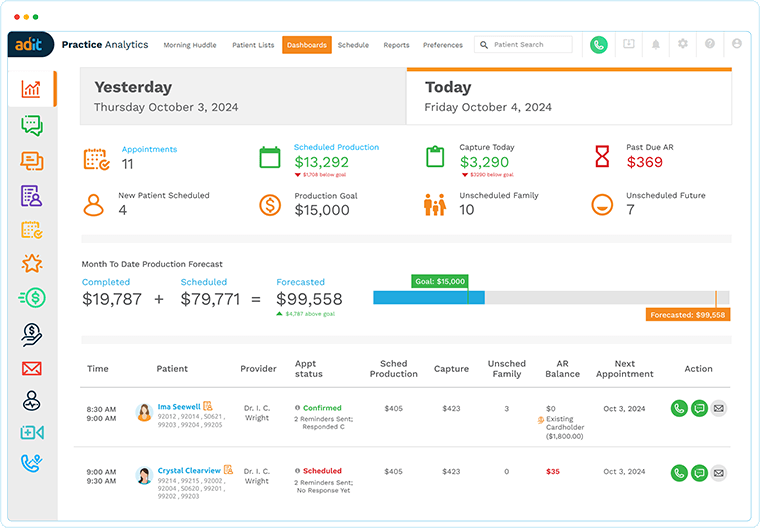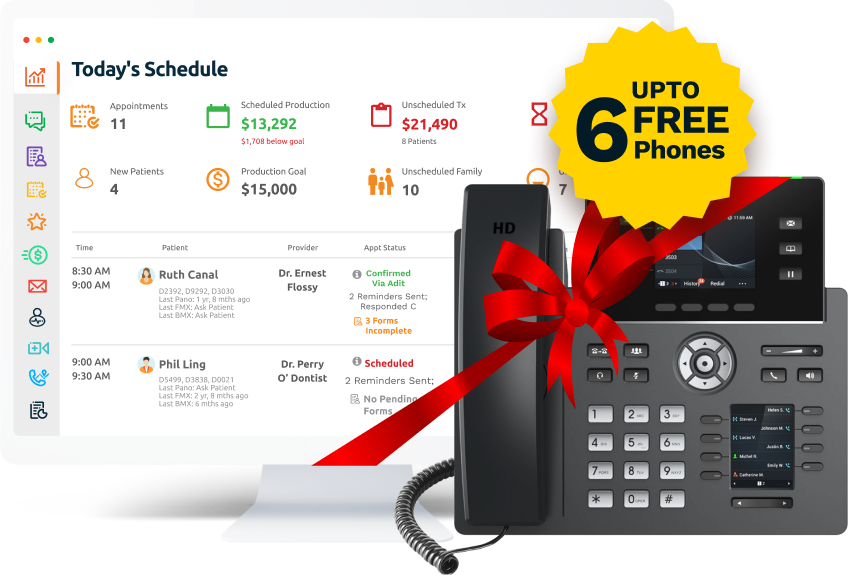Ends in
ends in 117 Days

ends in 117 Days

ends 11 July
Choosing the best Optometry software for your practice is easy

In today’s fast-evolving healthcare landscape, optometry practices face increasing demands: rising patient expectations, complex billing workflows, tighter competition, and the need for greater operational efficiency. Navigating this environment without the right software is nearly impossible. But with countless vendors on the market, how can you confidently choose the best optometry software for your practice? One that meets your current needs and also supports long-term growth. It isn’t so difficult, if you consider the right selection criteria.
Here’s what to focus on when evaluating optometry software solutions.
Start with your practice’s unique needs
No two optometry practices are alike; some manage multiple locations, others balance front-desk calls with patient care. Many are looking to modernize with digital tools like online scheduling and billing, while others seek workflow automation. Start by identifying your biggest pain points - whether it’s manual scheduling, frequent no-shows, slow billing, or low patient engagement between visits.
Key takeaway: Clarifying your priorities will help you cut through the noise and focus on platforms designed to address those specific challenges.
Look for unified, all-in-one platforms
One of the biggest problems that practices face is relying on a patchwork of disconnected tools; one for appointments, another for billing, a separate system for patient communication. These fragmented setups create inefficiencies, increase errors, and often lead to a disjointed patient experience. Instead, prioritize all-in-one software that integrates scheduling, reminders, billing, payments, digital forms, reporting and analytics into a single platform.
Key takeaway: Practices using unified systems report smoother operations, reduced administrative burden, and better coordination across practice teams.
Prioritize ease of use
Even the most advanced system will underperform if your team struggles to use it. When evaluating solutions, look for ones that are intuitive and with modern interfaces, require minimal training time and offer clear navigation both on desktop and mobile devices.
Key takeaway: Usability isn’t just about aesthetics; it directly impacts team efficiency, staff satisfaction, and ultimately, patient care.
Invest in patient communication tools
Patients expect convenience, and it is their right. They want to schedule online, receive reminders via text, fill out forms digitally, and communicate easily with your office. The right software enables automated confirmations and reminders, two-way texting for quick communication, digital intake forms and medical histories, and recall campaigns to keep patients engaged over time.
Key takeaway: Practices that adopt modern communication tools consistently see higher patient satisfaction and fewer no-shows, keeping schedules fuller and revenue more predictable.
Ensure efficient billing and payment capabilities
Ideally, your optometric billing software should streamline the entire revenue cycle by offering automated claim submission and tracking, real-time insurance eligibility checks, digital payment options (including online and text-to-pay), and transparent reporting on collections.
Key takeaway: This reduces administrative burden, speeds up reimbursements, and improves cash flow for long-term sustainability.

Leverage data and analytics
Choose software that offers detailed practice analytics and customizable reports, providing visibility into key performance areas like production and collections, scheduling and appointment trends, patient engagement, and practice sales.
How one Adit texting feature drove 30% revenue growth for Vision Source Magnolia Is Your Optometry Practice Leaving Revenue on the Table? Vision Source Magnolia upgraded from a patchwork of disconnected tools to an all-in-one solution with Adit...
Schedule a DemoKey takeaway: With clear data at your fingertips, you can make informed decisions, optimize resources, and set the right course for future growth.
Choose trusted support and partnership
Finally, software is only as valuable as the support behind it. Look for vendors that offer dedicated onboarding and training, responsive and knowledgeable support teams and ongoing product improvements and updates.
Key takeaway: Good software isn’t just a purchase, it’s a long-term partnership that helps your practice evolve and elevate your practice.
Final Thoughts
Choosing the best practice management software for optometrists isn’t just a matter of ticking off features; it’s about finding a platform that aligns with your practice’s goals, adapts to your workflows, syncs well with your optometry EHR and helps you deliver the best possible care. Practices that choose well-positioned, comprehensive platforms solve operational challenges and also set themselves up for a sustainable future.
If you’re ready to explore solutions that check all these boxes, there’s never been a better time to start evaluating, schedule a demo and see the difference!
more about Adit?
Access a full suite of patient communication tools with Adit! Texting, payments, reviews, & scheduling in one place.
Schedule a DemoAfter spending 10 years helping dentists grow their practices, Ali witnessed the time and money dentists were wasting on outdated, fragmented technology that negatively impacted sustainable growth and the overall patient experience. So he developed Adit - a user-friendly SaaS platform that centralizes everything a practice needs to operate and simplifies the business of dentistry so doctors can get back to the medicine.
Get a $25 Gift Card when you take a demo
Schedule a Demo
Get a $50 Gift Card
when you take a demo
Looks like you're out of bounds!
Hey there! Your current location falls outside Adit's area of operation. If this is unexpected, try disabling your VPN and refresh your page. For further assistance or to book a live demo, connect with us at 832-225-8865.
December 28 Amazon Demo Promo
Terms and Conditions
Last Updated: December 28, 2025Offer ends December 31, 2025, and is limited to prospective customers who sign an annual agreement before December 31, 2025. Gift card will be emailed to the company owner or established representative within 4 weeks of signing the annual agreement. Offer may not be combined with any other offers and is limited to one (1) gift card per office. Offer is not available to current customers or to prospective customers or individuals that have participated in a Adit demo during the prior six (6) months. Recipient is responsible for all taxes and fees associated with receipt and/or use of the gift card as well as reporting the receipt of the gift card as required under applicable federal and state laws. Adit is not responsible for and will not replace the gift card if it is lost or damaged, is not used within any applicable timeframe, or is misused by the recipient. Adit is not responsible for any injury or damage to persons or property which may be caused, directly or indirectly, in whole or in part, from the recipient’s participation in the promotion or receipt or use of the gift card. Recipient agrees to indemnify, defend and hold harmless Adit from and against any and all claims, expenses, and liabilities (including reasonable attorney’s fees) arising out of or relating to a recipient’s participation in the promotion and/or recipient’s acceptance, use or misuse of the gift card. This offer is sponsored by Adit Communications, Inc. and is in no way sponsored, endorsed or administered by, or associated with Amazon.
Thank You!
We appreciate your interest! Adit AI will be calling you in the next few minutes!
Why Adit?
Cut your software bill by up to 60% when you merge everything your dental office needs to run under one roof.
Centralize Communications
- Phones & TeleMed
- Emails & eFax
- Texting & Reminders
- Call Tracking and more!
Streamline Operations
- Patient Forms
- Online Scheduling
- Payments
- Reviews and more!
Boost Production
- Performance Dashboards
- Morning Huddle
- Claims & Collections
- Patient Profiles
- Follow Up Lists
- Year Over Year Metrics
Acquire More Patients
- Digital Marketing
- Website Design
- SEO
- Google Ads
- Facebook Ads
Ends in

Sign up by filling out the form







